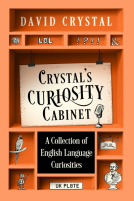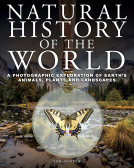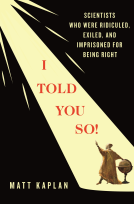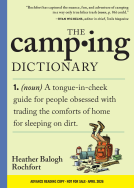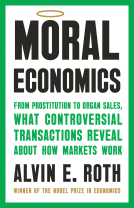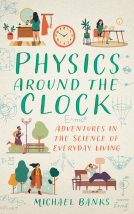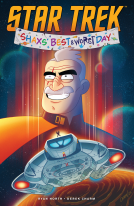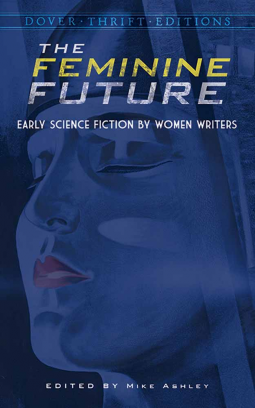
The Feminine Future: Early Science Fiction by Women Writers
Early Science Fiction by Women Writers
by Mike Ashley
This title was previously available on NetGalley and is now archived.
Send NetGalley books directly to your Kindle or Kindle app
1
To read on a Kindle or Kindle app, please add kindle@netgalley.com as an approved email address to receive files in your Amazon account. Click here for step-by-step instructions.
2
Also find your Kindle email address within your Amazon account, and enter it here.
Pub Date Mar 18 2015 | Archive Date Jun 08 2015
Description
Editor Mike Ashley provides an informative introduction to the stories. Highlights include "When Time Turned" (1901), which centers on a grieving widower who contrives to relive his life backwards; "The Painter of Dead Women" (1910), the tale of a woman in thrall to a Svengali-like character who promises to preserve her beauty forever; "The Automaton Ear" (1876), in which an inventor struggles to create a machine to detect sounds from the distant past; "Ely's Automatic Housemaid" (1899), a lighthearted fable concerning a robot housemaid; and ten other captivating tales.
Available Editions
| EDITION | Paperback |
| ISBN | 9780486790237 |
| PRICE | $4.50 (USD) |
Average rating from 34 members
Featured Reviews
 Althea M, Book Trade Professional
Althea M, Book Trade Professional
An anthology of early speculative fiction by women. While this is a public-domain collection, I hadn't encountered any of these stories before, and they're definitely not all easy to find - so this is definitely a worthwhile publication.
Not only interesting for historic value; the vast majority of the selections are highly entertaining.
*** When Time Turned - Ethel Watts Mumford (1901)
An early example (if not the earliest?) of a story where a man purports to experience life lived in reverse.
**** The Painter of Dead Women - Edna W. Underwood (1910)
A vivid tale of a woman who finds herself tricked into the hands of a modern-day Blackbeard. The imagery here is strikingly beautiful, and the threat horrific. Extra points for a self-reliant heroine with a cool head and a quick mind - but an over-simple resolution keeps it from a full five stars.
*** The Automaton Ear (1873) - Florence McLandburgh A brilliant but eccentric professor has an idea to create a device that will enable the listener to hear all the sounds of the world, by picking up on the faint echoes and waves remaining of the past's noises, both sublime and discordant. Obsession with the device and its use overtakes him, leading to decline... and madness?
**** Ely's Automatic Housemaid (1899) - Elizabeth W. Bellamy The pitfalls of robotic domestic servants... quite a humorous piece.
*** The Ray of Displacement (1903) - Harriet Prescott Spofford Likely influenced by H.G. Wells' 'Invisible Man' (1897). The inventor here devises an innovation that not only allows him to pass unseen - it also allows him the ability to pass right through matter. However, when he's jailed after an incident when he accidentally dematerializes an acquaintances diamond, he reuses to walk through the walls of the jail until his reputation is rehabilitated. However, his stubbornness may have consequences for more than just himself.
*** Those Fatal Filaments (1903) - Mabel Ernestine Abbott An inventor comes up with a new kind of telephone - one that not only transmits a person's voice, but also their unspoken thoughts. But when he tests the device in his home, he hears things from his family that aren't quite what he expected.
(Yeah, I agree with the author - this is not a device that would be adopted by the general public.)
**** The Third Drug (1908) - Edith Nesbit When a depressed man fleeing some murderous street thugs ducks into a dark courtyard and slams the door behind him, little does he realize that he may have jumped from the frying pan into the fire. A 'good Samaritan,' his seeming savior, may have an agenda of his own (and quite a horrific agenda it is.) Shades of Frankenstein, here...
** A Divided Republic: An Allegory of the Future (1887) - Lillie Devereux Blake As a story, this piece of writing is honestly not excellent. However, as an historical document and direct insight into political thoughts at the time of its writing - it's brilliant and hilarious. Blake was a political activist working for women's suffrage. (I'm in favor.) She was clearly also a member of the Temperance movement. (I'm not in favor.) In this call to activism, the women of the United States take a tip from Lysistrata, and take it one step further. Until women are granted suffrage (and various other political concessions) they all remove themselves to Washington State. Without women, men sink into a disorganized and filthy mess. Meanwhile, women set up a peaceful and Utopian society full of excellent schools, free cultural events, scientific and technical advancement, and reasonable prices! (And all the homes designed by women architects have plenty of closets.) However, both men and women are a little lonely...
There is definitely some deft skewering of newsworthy figures of the time - some of the references (Henry James, for example) I got, others went right past me. Obviously, this piece is satirical, but it still depends on one holding the belief that women are inherently peace-loving enlightened beings, the holders of culture - while men are inherently 'low' creatures lacking natural refinements.
**** Via the Hewitt Ray (1930) - M.F. Rupert This is a thoroughly enjoyable pulp sci-fi tale. You can freely peruse a scanned copy of the whole magazine it was first published in, here: http://comicbookplus.com/?dlid=36261 (Everyone should really check out the cool illustration on page 370.)
When her father disappears, a young airline pilot, Lucile, discovers a letter left for her describing how he's used a ray to beam himself into another dimension to find out who's been sending the mysterious messages he's been picking up on his instruments. Our airline pilot is not inclined toward physics, but luckily she has a close friend, Marion, who's a scientist. Within ten minutes, she's arrived via aircar, and the two women set out to figure things out. With Marion's expertise, soon Lucile is travelling into another dimension with a copy of her father's ray machine, with the goal of getting him back home. However, in a strange and alien land, it appears that Lucile and her father may have ended up on opposite sides of an incipient war.
The story is quite silly... but it's also very enjoyable. Reminded me quite a bit of an early Star Trek episode, in some ways...
*** The Great Beast of Kafue (1917) - Clotide Graves A colonial African hunter tells his young son about his pursuit of a legendary monster, akin to that of Loch Ness.
The writing is high-quality, and the setting comes through with a vivid sense of place (even though I don't believe that the author ever visited Africa). Unfortunately, unpleasant and offensive stereotypes also some through in a couple of places in the story.
Still, the story retains its power as a discussion around the symbolism and significance of the hunt, balanced by an emerging sense of empathy.
**** Friend Island (1917) - Francis Stevens (Gertrude Barrows Bennett)
In a future where women have naturally become the dominant sex, an old salt - a weathered sailor woman - tells the tale of the time she was a castaway on a very, very unusual island.
Let's just say - the dynamic here is pretty far from Robinson Crusoe and Man Friday. Good fun, and a nice illustration of reaping what you sow.
*** The Artificial Man (1929) - Clare Winger Harris A handsome football jock has always believed that mind and body are inextricably intertwined. His fit and attractive body indicates a fit and intelligent mind. When a double-whammy of terrible accidents destroys that body, his beliefs lead to a terrifying result. (Imagine if The Six Million Dollar Man was a horror story.)
(As an aside... I guess the 'German doctors will do anything' trope existed even before WWII!)
* Creatures of the Light (1930) - Sophie Wenzel Ellis Sorry, but this one's a flop. This might be the most unconvincing (and just flat-out wrong) romance ever set to paper. A man is lured in by a hunchbacked German doctor with an aim toward breeding a superior race. (Yes, again with the German doctors - I simply had no idea that this was a popular trope prior to WWII!) The way the story is constructed; all of the characters' actions were completely unconvincing to me.
The doctor has 'improved' a random woman by use of his Life Ray, intending her to breed with the selected narrator. Upon viewing a photograph of this woman, our narrator falls instantly in love with her, and out of love with his intelligent, but not-beautiful fiancée. However, a ubermensch created by the doctor's breeding programs also has his eye on the same woman - and will stop at nothing to seize her. Meanwhile, a super-woman, also a result of the breeding programs, decides that she wants our narrator.
The author posits that "perfection" is unappealing, which is why neither the regular man nor the super-man want the super-woman.
However, the 'improved' woman that everyone's after isn't shown in a very flattering light. The reader fails to understand her appeal.
Meanwhile, the off-screen jilted fiancée gets short shrift.
*** The Flying Teuton (1917) - Alice Brown Written during WWI, the author imagines a future directly after a peace accord has been reached - where a divine curse has been laid upon German naval affairs. Told from the point of view of an American on a German mercantile vessel en route to New York, we see his confusion and fear as he and the ship he's on encounter what seem to be a series of ghost ships, which refuse to answer their hails - which indeed, seem to pass right through them as if they are nothing but spectral hallucinations. Some very eerie moments, but I didn't feel that the resolution was as strong as it could've been.
Many thanks to Dover and NetGalley for bringing these almost-forgotten works to my attention. As always my opinions are my own.
 Jesse H, Reviewer
Jesse H, Reviewer
Regardless of preferred genre, most readers know the names Jules Verne, H.G. Wells, Robert Louis Stevenson, and H. Rider Haggard. On the strength of Jekyll and Hyde, Captain Nemo, the lost worlds of Africa, and Martians attacking Earth, they are considered pioneers, and by default, stanchions of science fiction and fantasy of the late 19th century. And all are men. Who were the women writing speculative fiction at the time? Unless the reader is a connoisseur of 19th and early 20th century genre, their answer is probably like mine: don’t know even if there were women writing spec fic. Having just finished editor Mike Ashley’s The Feminine Future: Early Science Fiction by Women Writers (2015, Dover Publications), I have been educated: there were women writing in that period, and not just writing, but producing stories of similar, groundbreaking quality as Verne, Wells, Stevenson, Haggard, and the rest.
The Feminine Future anthologizes fourteen short stories published between 1876 and 1930 by women writers. Having read this byline, my initial concern was that Ashley had little material to work with, and therefore selected stories with only the thinnest of connections to sf. My concerns were very misplaced. The stories selected are undeniably genre. The speculative elements not minor or incidental, they occupy fundamental positions or are the foundations upon which the stories are built. Whether it be robots or alternate history, shifts in time or social experiments, each possesses a recognizable trope or element still in use today, including some that are arguably their first appearance in print.
Expected given the era, several of the stories examine the potential negative effect of technology. Supposing we could build a machine that could read thoughts. Would it be beneficial or not?”, such is Ashley’s intro to “Those Fatal Filaments” by Mabel Ernestine Abbot. A quirky “electrician” testing the device on his wife, he learns things he’d rather not. It is every little boys dream to be able to walk through walls, and in “The Ray of Displacement”, Harrier Prescott Spofford brings the idea to life. Using Y-rays, a scientist is able to achieve not only invisibility, but also permeability, the subject’s cells able to pass through solids. Earliest published in the anthology, “The Automaton Ear” (1873) by Florence McLandburgh is about a man who is determined to construct the ultimate listening device. It’s the price he pays for creating such a thing, however, in which the real story exists.
Positively divisive for the time, a handful of the stories invert or reverse gender roles in intriguing fashion. The longest piece in the anthology, “Via the Hewiit Ray” by M.F. Rupert opens on a letter from a scientist to his daughter Lucille. Telling the young woman he will soon transfer himself to another dimension, he also instructs her where she can find his laboratory notes on the light-wave machine that will send him there. Getting to know the ins and outs of the machine, it isn’t long before Lucille (Colt .45 and cigarettes in hand) finds herself in another dimension—one ruled by supremely civilized women. Extra-dimensional adventure with sharp gender overtones, it’s a fascinating read when taking into account the social context of when it was published. But perhaps more fascinating is the manner in which it puts to shame such modern efforts as Kameron Hurley’s The Mirror Empire. One would think the idea would have evolved to be more complex, not less. “Friend Island” by Francis Stevens is framed by a women-ruled world, but is about a grizzled bartender, the shipwreck she once was part of, and the strange island she washed onto. “A Divided Republic—An Allegory of the Future” by Lillie Deveraux Blake answers the question: what if women abandoned men and started their own state.
At first, most of the men pretended that they were glad.
“We can go to the club whenever we like,” said a certain married man.
“And no one will fault us if we drop into a saloon,” added another.
“Or say that tobacco is nasty stuff,” suggested a third.
A story to be read in the context of its era—a time when women’s right to vote was not yet a reality, the humor takes on sharply satirical bite.
Karol Capek is given credit for bringing the term ‘robot’ into English idiom in his 1920 theater production R.U.R. But in The Feminine Future, as early as 1897 we see evidence of anthropomorphized machines: before there were robots there was “Ely’s Automatic Housemaid” (1897) by Elizabeth W. Bellamy. Containing no Three Laws of the Electric Automatic Househould Beneficient Genius, it does contain charisma in bucketloads—“Papa, you better come, quick! It’s a-tearin’ up these beds!” an actual quote. About two B.G.s purchased to help clean a family’s home, it engenders a spot of fun (I kept thinking of Tom & Jerry). One of, if not the first cyborg story, “The Artifical Man” by Clare Winger Harris possesses a main character whose quest, after a freak football accident, is summed by:“I shall find out yet by how slender a thread body and soul can hang together.” Believing in corporeal perfection, he sets out to fully mechanize himself—a story that incidentally forms a nice precursor/left bookend to Philip K. Dick’s “The Electric Ant”.
From the known (Astounding and Harper’s) to the unknown (Argosy and The Phrenological Journal), the anthology’s bibliography contains a fascinating list of source material. Before “The Curious Case of Benjamin Button” there was “When Time Turned” by Ethel Watts Mumford, published in a successful magazine of the time called The Black Cat. About a woman who goes to meet a friend for dinner, she is introduced to a most intriguing guest, and over the meal learns how he moves backwards through time. Each story opening with a brief bio, the reader is not only introduced to the story, but also the writers, their places in the field, and their relative accomplishments—very welcome indeed considering the high obscurity factor. Before “The Flying Teuton”, the reader learns about the successful career of Alice Brown, and then goes on to sample why. Not about not a ghost ship as the title might imply, rather a ghost fleet, it slowly twists into a state of fabulism the New Weird could embrace.
Unlike today’s publishing environment, turn of the 19 th century writers had to have their technique down. “The Painter of Dead Women” by Edna W. Underwood is a superbly written story of a woman who is taken to a ball by her husband. But when entering the gaudy room, she finds herself in an entirely different world—one more of her mind than body. Superman almost half a century before the Man of Steel came to exist in comics, “The Third Drug” by Edith Nesbitt is likewise very well written. About a man attacked on a dark Parisian street, he finds refuge at the nearby home of a doctor but quickly learns that the locked door keeping his would-be assailants on the street also prevents him from escaping. Offered a potion like no other, the assailants, however, become a minor concern.
In the end, The Feminine Future is an amazing collection of stories. Not necessarily in the every-selection-blows-your-mind sense (though there are several high quality stories), rather in the gender/historical perspective it offers. It is as esoteric as sci-fi gets, in fact. Verne, Wells, and Stevenson no flukes, they were part of a wider community which included women writers producing stories just as quality, but who have been swept under the rug in the intervening time. Ashley is thus doing the community a wonderful service by pulling back the rug. Absolutely fascinating to read a story about a robot from the 19th century perspective, this anthology is not just for feminists or the p.c. crowd. It can be enjoyed by the whole spectrum of sf readers, and comes highly recommended.
Published between 1876 and 1930, the following are the fourteen stories collected in The Feminine Future:
“When Time Turned” by Ethel Watts Mumford
“The Painter of Dead Women” by Edna W. Underwood
“The Automaton Ear” by Florence McLandburgh
“Ely’s Automatic Housemaid” by Elizabeth W. Bellamy
“The Ray of Displacement” by Harrier Prescott Spofford
“Those Fatal Filaments” by Mabel Ernestine Abbot
“The Third Drug” by Edith Nesbitt
“A Divided Republic—An Allegory of the Future” by Lillie Deveraux Blake
“Via the Hewiit Ray” by M.F. Rupert
“The Great Beast of Kafue” by Clotilde Graves
“Friend Island” by Francis Stevens
“The Artifical Man” by Clare Winger Harris
“Creatures of the Light” by Sophie Wenzel Ellis
“The Flying Teuton” by Alice Brown
As someone who's interested both in early SF and women writers, I leapt at the opportunity to review this (via Netgalley). It didn't disappoint, although for some reason I had misunderstood and was expecting specifically feminist fiction. It's "feminine", not "feminist". There are a couple of proto-feminist stories, but most of the stories, written between 1873 and 1930, read very much like stories by men of the time.
The viewpoint (whether first or third person) is almost always a man's, notably, with a couple of exceptions. Did genre stories from a female POV not sell, or did the women of the time just not think of writing them?
The quality of the stories is generally high, though there is one - the fantasy of a frustrated suffragist in which all the women of the USA migrate to the west and set up their own republic there - which is almost entirely in "tell" mode, and more interesting because of its content than its form. The editing is good, with only five mostly minor errors that I noticed - not always the case with these collections of older works, which are often scanned from spotty pages and end up full of typos.
Overall, I notice a greater focus on relationships in many of the stories than is the case with stories by men of the time, something that's also apparent in the great C.L. Moore. I don't think I'm just reading that in. A lot of the SF stories by men of the 1870s to 1930s read as if written by adolescents, as far as the emotional background and connection of the characters is concerned. Many (not all) of these stories do considerably better - though not all of them were published in the pulp ghetto where SF was increasingly herded, a number of them appearing in more "literary" magazines.
Story by story, here's how it went down.
"When Time Turned" by Ethel Watts Mumford, 1901: Benjamin Button 20 years earlier, with an elderly man who is experiencing his life backwards. Not just a novelty "wouldn't it be rum if" story, but a moving account of the man's loves and losses, joys and sorrows. Told from the viewpoint of a (male) observer.
"The Painter of Dead Women" by Edna W. Underwood, 1910: Unusual among the stories in this volume, particularly the early ones, in that it's told from a woman's point of view (in first person), and the woman is very much a protagonist - as much as it looks as if she's going to be a victim.
"The Automaton Ear" by Florence McLandburgh, 1873: The oldest story in the book, and (like the first two) with a strong thread of insanity running through it. A scientist is obsessed with the idea of recapturing the sounds of the past. Male narrator, first person.
"Ely's Automatic Housemaid" by Elizabeth W. Bellamy, 1899: A technology-gone-wrong funny story, a genre still very much alive today. The frustrations of a middle-class household in getting competent servants seem to be solved when the (male) first-person narrator's friend offers them a pair of automatons. His wife and daughter don't do much, compared to him and his son.
"The Ray of Displacement" by Harriett Prescott Spofford, 1903: Male first-person narrator, a scientist, develops a ray which can make him able to pass through solid objects and, at a different setting, to become invisible. Many writers of the time (or of 30 years later) would have just infodumped about how cool this was, but Spofford manages a gripping story full of drama, injustice, revenge and a glorious and disturbing twist.
"Those Fatal Filaments" by Mabel Ernestine Abbott, 1903: Male first-person narrator, an engineer, develops a thought-reading device, and instead of infodumping about how cool it is, Abbott manages a gripping story of emotional and relational near-tragedy.
"The Third Drug" by Edith Nesbit (as E. Bland), 1908: [author:E. Nesbit|7935185] is the only author in the volume that I'd heard of (she wrote some classic children's stories which are still enjoyed today). This one has a male protagonist, is told in tight third-person, and is an action-packed adventure in early-20th-century Paris involving a mad scientist.
"A Divided Republic" by Lillie Devereux Blake, 1887: Subtitled "An Allegory of the Future," but not actually an allegory, this is the story I mentioned before, mostly in "tell" rather than "show" mode and without depth to the characters, but told to convey ideas rather than to entertain. The women of America all pack up and move west when the men refuse to grant them the vote (something which, in fact, took another 30 years). "It must not be supposed that their departure took place without protest on the part of the men. Some of them were greatly dismayed when they heard that wife and daughters were going away, and attempted remonstrance," she remarks with delightful gravity. There are several burns directed at various named men of the time who, apparently, were known as opponents of female suffrage of one kind or another.
"Via the Hewitt Ray" by M.F. Rupert, 1930: The second story in the book to have a female point-of-view character (and first-person narrator), this one depicts a female-dominated society in the fourth dimension. It's no utopia - the women are depicted as cold-hearted and cruel to the men and to their enemies. Yet the protagonist, a liberated young woman pilot of the relatively near future (when the story was written), who has gone to the fourth dimension to rescue her scientist father, joins gleefully in a genocidal attack on another race, justifying her participation by observing that the enemies were not much like her so it didn't bother her. The 1930s, eh?
"The Great Beast of Kafue" by Clotilde Graves (as Richard Dehan), 1917: From the first-person POV of a young boy, this could easily have just been a Great White Hunter in Africa story, but it manages to be a tale of deep emotional loss and the wounds that inflicts.
"Friend Island" by Francis Stevens, 1918: A story by a woman (Gertrude Barrows Bennett), using a man's name, told from the POV of a male narrator who is, however, only there to mediate the story of a woman, a female mariner in a time when women are dominant and have most of the seagoing jobs. Like a lot of early fiction that imagines a female-dominated society - including "A Divided Republic," but definitely not including "Via the Hewitt Ray" - it assumes that if women took men's roles society would become gentler and more civilised. Even in the "shabby little tea shops frequented by able sailoresses of the poorer type," we see "spruce, smiling young maidens... despite their profession, very neat in gold-braided blue knickers and boleros," and the chronicler treats the raconteur to tea and macaroons, not alcohol.
"The Artificial Man" by Clare Winger Harris, 1929: One of a couple of stories in this volume which raise the question of outward appearance versus moral virtue. Harris was the first woman to sell a story to the world's first SF magazine, Amazing Stories, and this story is among the first to depict a cyborg (not by that name). The moral decline of a man who replaces parts of himself with machinery raises all kinds of questions and is dramatically told, with love and friendship among the casualties of his fall.
"Creatures of the Light" by Sophie Wenzel Ellis, 1930: This is the second story dealing with outward vs inward perfection, in which an outwardly perfected man's inner contempt for "lesser" beings, including his Igor-like creator, brings tragedy and destruction to an attempted utopia. The hero is also good-looking, though he affects to despise his own looks; yet he struggles only briefly with abandoning his brilliant but plain fiancee for someone much more outwardly attractive.
"The Flying Teuton" by Alice Brown, 1917: A story set after World War I, written and published during the war, in which a kind of divine punishment falls on Germany and the allied nations, in sympathy, make a fair and lasting peace. Again, the viewpoint character is male, as are all of the characters.
I went into this collection expecting stories which were historically interesting, but not necessarily, by modern standards, particularly good (solely because of their age). What I found were some excellently-written and engaging stories that deserve a wider audience.
 Reviewer 76613
Reviewer 76613
“One reason why we say so few women wrote science fiction in the early days: it’s because we’ve simply forgotten them.”
When I saw an anthology of early female-authored scifi on Netgalley, I knew I had to grab it. While I'm well aware of the female participants in the golden age of detective fiction, I had no idea that they women were also so active in early science fiction. All the stories are in the public domain, but I think the stories are more approachable here, as Ashley starts each story with a short biography of the author. Ashley has compiled an interesting collection: most of the stories were written before the turn of the century through the first war, at a time in which science and technology were radically transforming everyday life. Perhaps because of this, the common theme in most of the stories is the threat of technology. Almost every story treats technological advancement almost biblically, as the fruit of forbidden knowledge: an advancement that raises humanity too close to God and inevitably leads to disaster.
The other fascinating aspect, to me at least, was the predominance of the male perspective. Ten of the fourteen stories feature a male protagonist and narrator. The remainder constitutes a male narrator but female protagonist/storyteller, a female following her scientist father, a female narrator captured by a creepy serial killer, and and an omniscient perspective that focuses mainly on the female characters. This last, "Divided Republic--An Allegory of the Future" by Lillie Devereux Blake, is so outspokenly and rather absurdly pro-feminist that it could have been written by Ariadne Oliver, Mrs. Rachel Lynde, or Amelia Peabody. Written in 1887, it neatly predicts both the initial rejection of suffrage and the legislation and subsequent failure of Prohibition, at which point the women go on strike and start their own county. It's an entertaining little tale, but also rather problematic. Even as Blake agitates for equality, she strongly stereotypes the sexes into rigid and restrictive gender roles, casting women as the docile peacemakers and men as sinful, noisy, and active.
"Friend Island" by Francis Stevens is not much more subtle, but far more interesting. It features a world where "woman's superiority to man" has been recognized and women hold all the powerful positions in the story. A man interviews a female sailor about her experiences, and she tells him a yarn about a sentient floating island. The gender power dynamics are all the more interesting because they aren't the focus of the story itself.
"The Painter of Dead Women" by Edna W Underwood, on the other hand, is a critique of the gender norms of the time. The only story in the collection completely narrated by a woman, it explores society's obsession with female beauty. The story itself is classic horror, with a twist that was viscerally reminiscent of Gunther von Hagens' exceedingly creepy Body Worlds.
The last story involving a female narrator, "Via the Hewitt Ray" by M. F. Rupert, is more a classic adventure story that reminded me quite a bit of Wells' Time Machine. A (male) scientist travels to another dimension via his invention of the eponymous Hewitt Ray. After he disappears, his worried daughter sets off to rescue him. In the other dimension, she meets several different races, including one ruled by women, and finds herself in the middle of a bitter conflict between the different races. I had trouble interpreting Rupert's feelings about the society she creates; the female protagonist is horrified by the dominant females' treatment of men and seems not to mind her "kindly" father's patronizing attitudes to her. At first, I thought the story was going to be a commentary on tragic misunderstandings due to physical differences, and was rather disturbed when much to the contrary, the "happy ending" turns out to involve utterly remorseless genocide.
Every story in the collection, apart from these four, portrays a male protagonist acting within a man's world. As previously noted, most of the remainder provide a sense of technology as reaching outside of the natural order of things. There are only a few exceptions. The first story in the collection, "When Time Turned" by Ethel Watts Mumford, features a man who is traveling backwards in time. Although interesting, I got very hung up on some of the conflicting details--for example, the narrator comments that he looks to be about 50 when he is suppose to be 23. I can't imagine how that would work when he turned back into a baby, but an interesting idea nonetheless. "The Great Beast of Kafue" by Clotilde Graves is more fantasy or horror than scifi and involves a mysterious monster in a Zambian lake. The most interesting part of the story, in my opinion, was the biography of Graves herself: even though she lived in the late Victorian era, she apparently often dressed as a man and smoked in public. It is fitting that her story is equally unconventional. "The Flying Teuton" by Alice Brown provides a fascinating portrait of American pacifist view on the Great War. Written before the outcome of the Treaty of Versailles, it postulates rather more forgiving Allies who promote healing in Europe rather than punishment. Unfortunately, the sea is rather less forgiving. It provides an interesting glimpse of rather hopeful views of the time, though I would have called it "The Flying Deutschman."
The remainder of the stories all deal in technological advancement gone awry, ranging from "Ely's Automatic Housemaid" by Elizabeth W Bellamy, an amusing little comedy about robotic "Electric Automatic Household Beneficent Geniuses" running amok, to "Those Fatal Filaments" by Mabel Ernestine Abbott, a succinct little tale about how a thought-reading "thinkaphone" can cause more misunderstandings than it cures, to the "Ray of Displacement" by Harriet Prescott Spofford, an odd little story in which the protagonist discovers a new "Y-ray" that can make people invisible and temporarily intangible. Unfortunately for the protagonist, the malice of an old acquaintance leads him to be locked up in prison, where he meets the unsubtly-named chaplain, "St. Angel," who helps him to utilize his invention to gain his freedom. Some of the stories were ridiculously unscientific, even for the knowledge of the time. The premise of "The Automaton Ear" by Florence McLandburgh is that all sounds last forever, growing fainter as they travel endlessly around the globe. The idea is more romantic than feasible--after all, if every sound is permanent, how does the scientist and his machine manage to capture only a pleasant medley of famous speeches, world-class opera, and birdsong?
Many of the stories involve a quest for immortality. In "The Third Drug" by Edith Nesbit, life and death are inextricably tied, and immortality can be found only in their intersection. I've always loved E.E. Nesbit, and was amazed by the difference in tone of this creepy little tale. For me, the most disturbing aspect was the way in which the antagonist twists the Christian doctrine of the talents:
"I have not buried my talent. I have been faithful. I have laid down all--love, and joy, and pity, and the little beautiful things of life--all, all, on the altar of science, and seen them consume away. I deserve my heaven, if ever man did."
Like immortality, eugenics was a disturbingly common theme in the stories. It is most overt in "Creatures of the LIght" by Sophie Wenzel Ellis, which also happened to be both my least favourite and the longest story in the collection. When the (incredibly handsome, intelligent, and athletic) hero sees the picture of a beautiful woman, he suffers from an immediate, passionate, and reciprocated case of Instalove that pits him against the superhuman outcome of a scientist's eugenics experiment. (He also immediately decides to dump his good-natured, intelligent, but insufficiently attractive fiance, although I'm not sure he ever gets around to telling her.) The story not only involves a fatuous and ridiculous bit of InstaLove; it also contains a secret laboratory in the Arctic, time-travelling villains, a superhuman seductress, and a Death Ray. The message is as ill-considered as the rest: even though the (incredibly beautiful) characters conclude that "perfection" is not to be desired, the story ends with everyone cheering about how events brought together "a perfect man and a perfect woman" which will have "furthered natural evolution." Yuck.
The story that stayed with me the longest was "The Artificial Man" by Clare Winger Harris, which explores the relationship between the physical form and the intangible self. After a terrible accident that left him with an artificial leg, the main character sets out to find out "by how slender a thread body and soul can hang together" by replacing as much of his body as possible with artificial parts. Although the message is more dogmatic than we would accept in our age of biomechanical enhancement, I think the idea is as fascinating and troubling now as it was back then. I'm currently reading Richard Morgan's Artificial Carbon, and was startled by the similarity of the theme: in a world where the physical form can be replaced by computers and machinery, where does the indivisible "self" lie?
Overall, I greatly appreciated the opportunity to widen my knowledge of early scifi. While the stories themselves are dated, they provide an interesting glimpse of another time, a point where, like the present moment, the influx of technology rapidly transformed not only everyday life, but also society's hopes and fears.
Posted on BookLikes: http://pagefault.booklikes.com/post/1131630/
Cross-posted on GoodReads: www.goodreads.com/review/show/1225199202
 Dawn T, Librarian
Dawn T, Librarian
There is a special pleasure in reading science fiction written in the early years of the genre, before scientific discoveries and technological advances made it more difficult to pen fantastic plots whose credibility could not be instantly discounted. Certainly, “modern” sci-fi can threaten the boundaries of plausibility, but it generally tends to stay within the realm of the possible. What crashes through those boundaries usually winds up being classified as fantasy. But in the old days, the landscape of possibility was as vast as the author's imagination, and writers might easily ignore category or sub-genre and take full advantage of the idea that a plot could not be too far-fetched to be believable.
This collection of stories, edited by award-winning anthologist Mike Ashley, not only brings together a nice set of fourteen mostly pre-pulp era science fiction tales, wherein anything goes, it adds a degree of significance by presenting only those written by women. That is, obviously, the reason for the book. As Ashley writes in his general introduction about the “forgotten pioneers” of the genre: “the…misconception is that until recently few women wrote science fiction”. He goes on to credit early female writers with helping to “define the nature of what science fiction is”.
Ashley prefaces each story with an overview of its author, touching on her life and work. Without fail, these brief bios are illuminating and often surprising. Of course, any anthology stands or falls on the quality of its stories. That’s no problem here. It isn’t necessary to pick favorites, as all hold the reader’s interest, but I especially enjoyed Edith Nesbit’s “The Third Drug” — that which grants godlike powers; Alice Brown’s “The Flying Teuton”, with its novel take on ghost ships; Clare Winger Harris’ “The Artificial Man”, a frightening, almost sickening, story about a man obsessed with turning himself into what we call today a cyborg; and Elizabeth Bellamy’s humorous “Ely’s Automatic Housemaid”, which features this clever description of an eccentric genius’ handwriting: “It was addressed…in the Archimedean script always so characteristic of him, combining, as it seemed to do, the principles of the screw and of the inclined plane”.
A purist would not label every story “science fiction”. But that, as Ashley mentions, is the other misconception he attempts to dispel — that the limitations on the genre have, in fact, changed and broadened over the years. In the end, though, it doesn’t matter how those borderline tales are classified, for each is imaginative and diverting. And after all, the bulk of the selections employ what would become traditional sci-fi themes. To again quote the editor, the stories included helped to “develop many of the basic ideas of science fiction — alternate worlds, other dimensions, invisibility, super-powers, shifts in time, automatons and cyborgs, thought-reading, immortality…”
Though the tales in The Feminine Future were written by women, it is interesting that so few have female protagonists, or antagonists, for that matter. Several of these involve societies where women have become the dominant sex; a clear reflection of the atmosphere among intelligent females of the day who were still in the first stages of the fight for equality. The fact that most have male leads also serves to demonstrate how severely restricted women were as to what they could do with their lives.
Each of these authors truly was a pioneer, and it’s unfortunate that most have been neglected, if not entirely forgotten. Science fiction wouldn’t be what it is today without their contributions, and The Feminine Future does a service to every fan of the genre. Additional collections along the lines of this first would be most welcome!
I would be remiss if I didn’t point out that The Feminine Future sells for a meager $4.50 (at present, the eBook costs even less). If you appreciate early science fiction literature, or wish to expand your knowledge of the genre, then don’t hesitate to grab it!
— Jennifer Michelle
Verdict: 4.5 of 5 Hearts. An Entertaining Anthology of Early and Influential Sci-Fi.
The Feminine Future is a collection of literate and imaginative pre-pulp science fiction stories by talented and unjustly neglected female authors. It should sit comfortably on the shelves of any true SF fan; indeed, it is a necessity for those shelves.
 Kathleen C, Reviewer
Kathleen C, Reviewer
The Feminine Future: Early Science Fiction by Women Writers APRIL 22, 2015 ~ KAT
A new anthology from Dover, The Feminine Future: Early Science Fiction by Women Writers, traces the development of women’s science fiction from 1873 to 1930.
The editor Mike Ashley provides a historical context for the 14 stories.. He says in the introduction that it is commonly believed that women did not write SF until recently. Here he has resurrected women who wrote for the pulps, including Clare Winger Harris, the first woman who wrote for science fiction magazines.. And he reminds us “that science fiction is only about adventures in space and time, with alien monsters or mad scientists or superheroes.”
Certainly the stories here are usually centered on Earth. In E. Nesbit’s story, “The Third Drug” (1908), SF is combined with elements of horror. The narrator escapes a gang of thugs in the streets of Paris by rushing through a gate and barricading it. Then he falls into the hands of a mad scientist who has been experimenting with three very creepy drugs. An eerie, terrifying story. and a departure for Nesbit, who is best known for her children’s books.
My favorite story is Edna W. Underwood’s “The Painter of Dead Women” (1911). Underwood, a vividly offbeat writer, may have developed her bizarre imagination by the translation of Gogol which was her first book in 1903. In “The Painter of Dead Women,” she explores a horrifying premise: Count Ponteleon, a famous painter of dead women, kidnaps women and administers a poison developed by his ancestors which causes death and arrests physical decay. He has kidnapped her on her honeymoon in Naples. He lacks a beautiful Englishwoman for his collection. Very sinister, but fortunately the heroine is six-ft.-tall, athletic, and an invincible swimmer.
Are you ready for a humorous story? Elizabeth W. Bellamy’s story, “Ely’s Automatic Housemaid” (1900), is charming and comical. The narrator buys two robot housemaids invented by a genius, Harrison Ely. “I had known him in college, a man amazingly dull in Latin and Greek and even in English, but with ideas of his own that could not be expressed in language. His bent was purely mechanical…” But t is difficult to program the maids to do just what you want them to do. If you don’t get the time right, they make the beds over and over. And you really don’t want your children to program mechanical housemaids. One of the funniest scenes is when both maids are programmed to sweep . They have a kind of sweeping fight with their brooms.
In general the women are not sanguine about the future. In Clare Winger Harris’s “The Artificial Man” (1929), a man becomes a cyborg. George Gregory, a brilliant student and football stars has a series of terrible accidents that reduce him from strong man with a bright future to a cripple with prosthetic limbs. . Then he needs an artificial kidney, and eventually, like a plastic surgery addict, he has all of his body parts replaced by artificial materials. He becomes a cyborg to take revenge on the woman who dumped him.
M. F. Rupert takes a different tack. In this partly epistolary story, “Via the Hewett Ray” (1930), her heroine, the daughter of a scientist, travels to another dimension After her father develops a light ray device , he disappears and she goes to rescue him. She does not, however, end up in the right place. She visits a highly organized society ruled by unemotional women where men are the underdogs. There is much humor in this story: she finds her father, but also rescues a man who has been condemned for sedition against his female oppressors.. it’s as good a way to find a mate as any.
Are these stories good? Are they well-written? Not all, and not exactly. But it is a wonderful introduction to the history of women’s contributions to SF.
 Educator 194902
Educator 194902
Glad that Mike Ashley and Dover Publications have put together early science fiction by women authors. Great resource for classes!
Great science fiction stories I received this book for free via Netgalley as an advanced reader copy in exchange for an honest review. First and foremost, these are great science fiction stories. Editor Mike Ashley did an excellent job of selecting the stories, which are easily good enough to make it into any “Best of…” types of anthologies. While most of the stories were typical science fiction, two of the stories also explored gender issues. Interestingly, most of the protagonists in the collection are male, which I found disappointing but the stories are products of their times, I guess. All the stories are preceded by short biographies of these women writers, which are also interesting. The reader should also take into consideration when the stories were published, from 1873 to 1930. I strongly recommend this book for anyone who reads the genre.
 Susan C, Reviewer
Susan C, Reviewer
Really good to read sci fi from a female perspective; a good range of stories too.
A necessary collection. So few of the earliest female science fiction writers have been recognized, and this anthology finally gives us at least a sample of what we've been missing. The stories are not always great- especially to modern sensibilities- but anyone who wants to understand the roots of genre fiction should read these stories, and appreciate some of the founding mothers of sci-fi. Despite the fact that many of these stories are available in the public domain, this collection is worth having as so many of these writers have fallen out of the public consciousness, that most people wouldn't know to go looking for them.
Readers who liked this book also liked:
Alvin E. Roth
Business, Leadership, Finance, Health, Mind & Body, Politics & Current Affairs
Ryan North; Derek Charm
Comics, Graphic Novels, Manga, Entertainment & Pop Culture, Sci Fi & Fantasy

